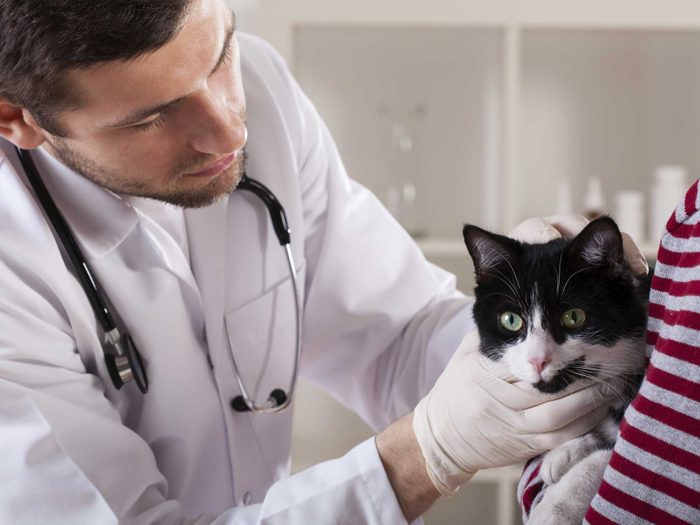
Pet Doctor Care
The treatment your veterinarian and their vet technicians provide is worth the price you must pay. Often you’re finishing up with the vet when the receptionist delivers the good news: The bill is ready for you. Now for the bad news: It’ll cost you a chunk of change for baby’s Bordetella shot and its freshly emptied anal sacs.
But why should you have to pay so much to help a poor, defenseless (not to mention super cute) creature? After all, if you can’t find charity at the vet’s office, where can you?
Ask Georgette Wilson, DVM, manager of vet operations at Pfizer Animal Health in New York City, and she’ll tell you that charity is all a matter of perspective.
“If you’re looking for an educated, compassionate, and fair hand in the care and well-being of your animal, chances are your vet’s already giving it in droves,” Wilson said. “Unfortunately, too many people fail to recognize the value vets bring to their pets. We’re asked over and over again that, if we love animals so much, why aren’t we offering our services for free?'”
To answer that question — and help you understand why veterinarians are worth their weight in currency — the following are four things you may not know about them, but should. They just may change the way you think about paying on the way out.

They Are Trained as Vigorously as Doctors of Human Medicine
Consider this:
• It takes four years of college and four years of veterinary school to become a vet. Then, students must pass both national and state exams to practice, and take continuing education courses to keep up with new developments.
• It’s statistically harder to get into veterinary school than it is to get into a human medical school because of the limited number of vet schools, as compared to medical schools. (There are only 28 vet schools in the United States).
• Vets going into specialty practice (there are about 20 in veterinary medicine, from cardiology and ophthalmology to behavioral medicine and surgery, etc) go on to do an internship and residency, with each step becoming more competitive.
“When all is said and done, a vet can have as many as 11 to 12 years of additional training after high school,” Wilson said. “Most people don’t know that.”

It’s Not About the Money for Vets
While today’s veterinarians can make a good living, it’s not nearly as much as their counterparts in human medicine. Depending on where they live and their specific field of practice, they can make anywhere from about $35,000 (for equine veterinarians) to $117,000 a year (for laboratory animal veterinarians), according to the most recent estimates. Vets in private practice earn around $50,000, and those in government earn around $70,000.
“The reward for us is really not about money, because we don’t make as much as many people think,” Wilson said. “It’s really about seeing pets get better.”

They Love Science and Medicine
“People always say I must love animals to be in veterinary medicine. And I do, but I also love science and medicine,” Wilson said. In fact, she and others agree it’s the combination of all three that draw people into veterinary practice.
And that’s a good thing, since there’s plenty of each involved in treating the broad spectrum of species examined and treated by veterinarians. While human physicians must learn about male and female anatomy and physiology, vets need to understand cats, dogs, cows, pigs, goats, sheep, horses, birds, rodents, rabbits, amphibians, reptiles, and so on.
Vets also need to know how each species functions and responds to available medications, and have a solid understanding of the basic behaviors, care requirements, diseases and parasites related to each species.

They Offer Value Beyond the Prescription
Finally, while vets bring their medical skills and knowledge in treating their patients and educating their patient’s owners, they also offer the softer side of what it takes to be a communicative, concerned and knowledgeable caregiver – and a great advocate for your pet.
“Becoming a vet is a lot of hard work and we take seriously our duty to act in the best interests of our client’s pets,” Wilson said. “Even if owners don’t like our recommendations or paying for them, we try to help them understand the value of our experience, education, and expertise. I always hope, as all vets do, that at the end of a visit, owners leave feeling good about how we’ve helped them.”
Rather than skimping on visits to the vet, pet owners should consider pet insurance and other forms of financial assistance.
This article has been reprinted with permission from WebVet, LLC. Find this article and other great information for pet owners at webvet.com.
© WebVet, LLC, 2011. Reprinted with permission.